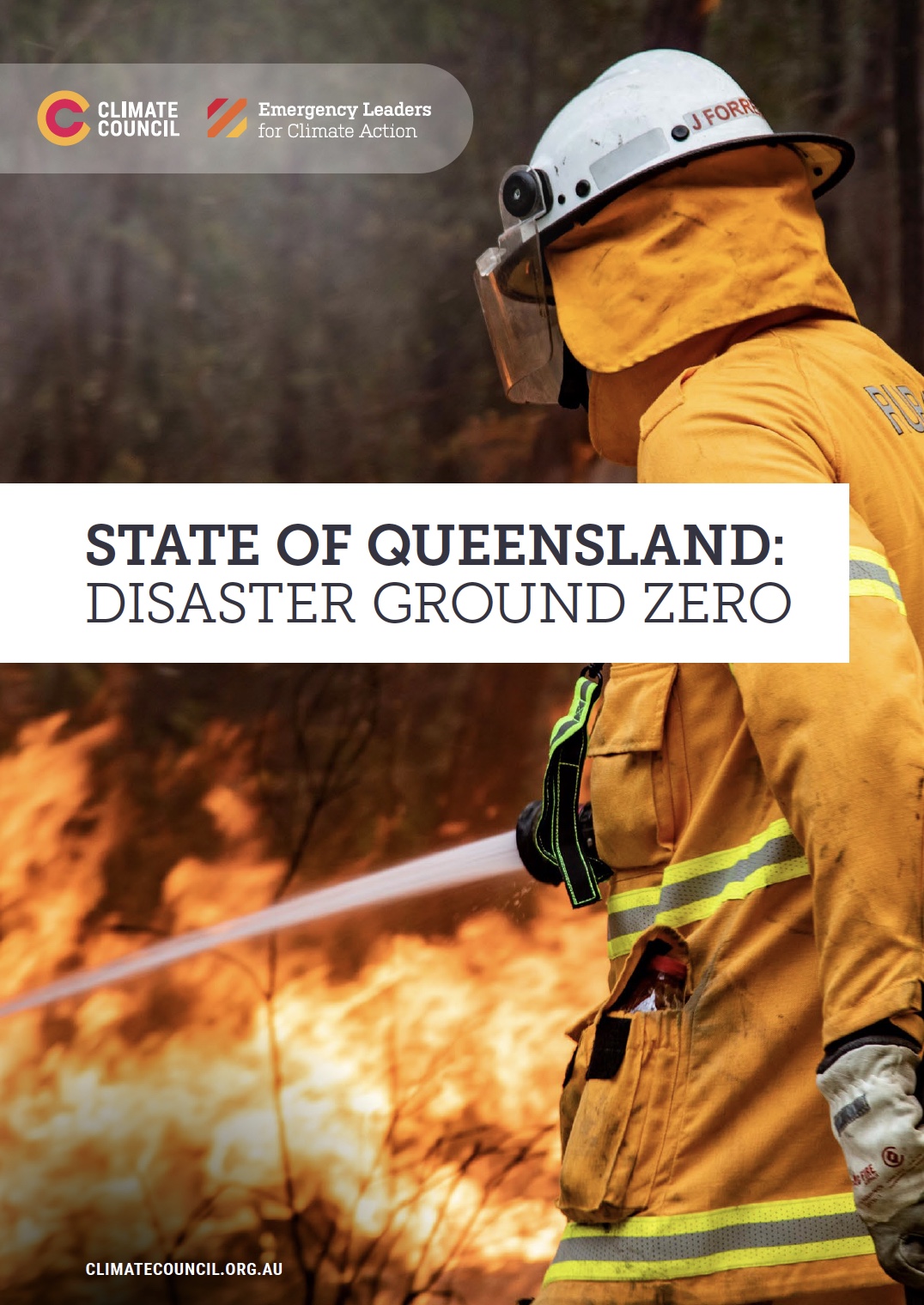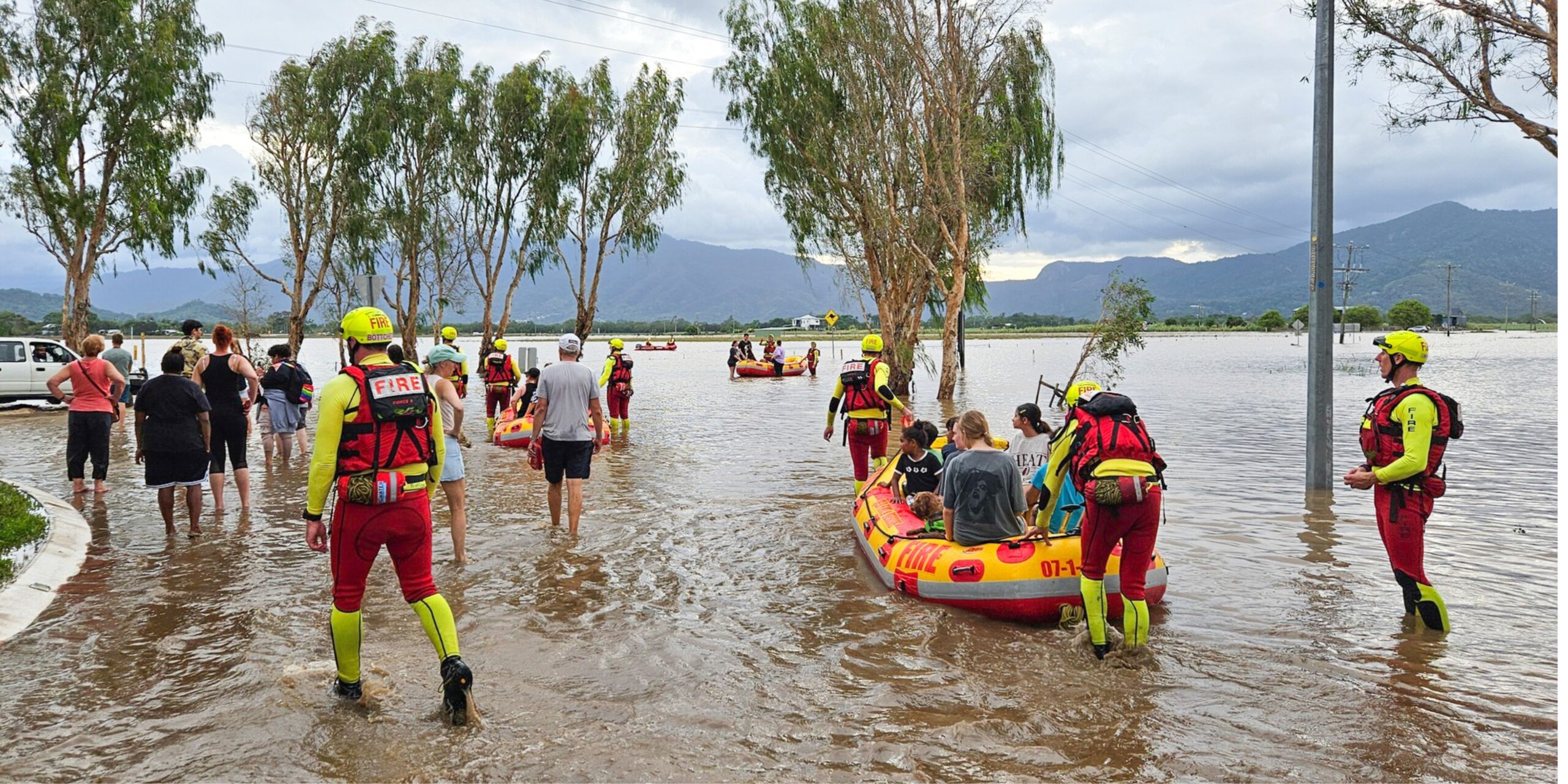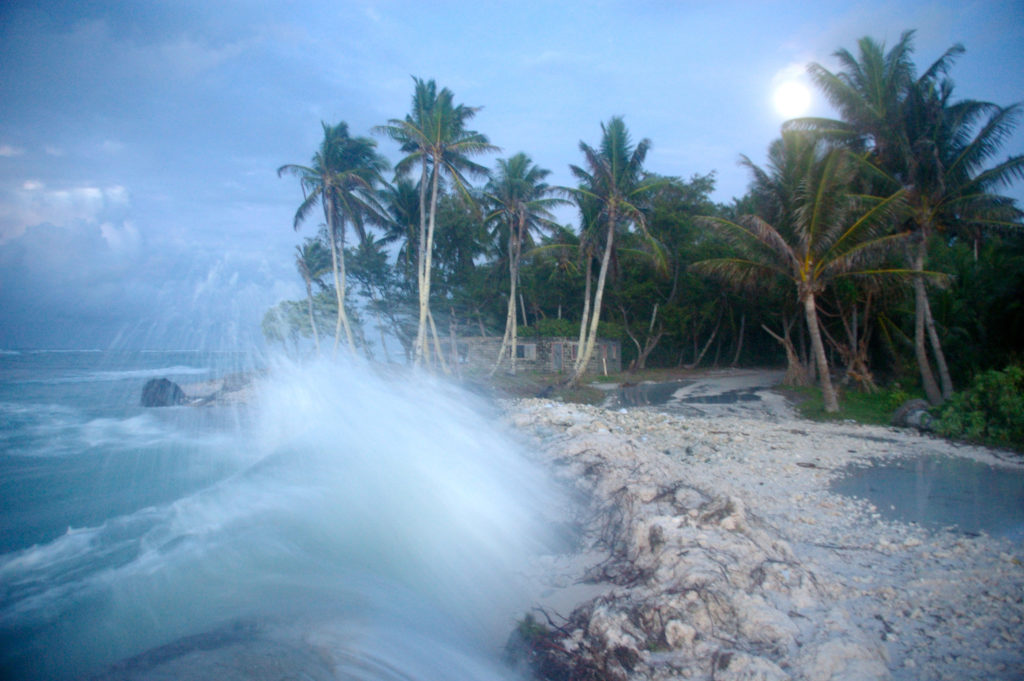Queensland may be known as the Sunshine State, but it’s also Australia’s ground zero when it comes to climate fuelled disasters. At the tropical end of the country, Queensland has long been prone to destructive cyclones, storms and flooding. But as climate pollution from the burning of coal, oil and gas intensifies extreme weather, Queensland has become increasingly prone to killer heatwaves and deadly bushfires too.
The impacts of these more intense – and in some cases, more frequent – disasters add up. More lives claimed, more homes destroyed, insurance costs through the roof and tourism industries under threat.
The bad news is, it’s likely to get worse. Long-term projections show that climate change will bring more hot days and nights, more extreme bushfires and fewer but more intense cyclones to Queensland over the coming decades.
The good news is, slashing climate pollution now can limit how much worse these disasters become. Setting strong climate targets and accelerating the rollout of clean energy to cut climate pollution is a good start, but it’s not enough.
The Queensland Government needs to stop approving new or expanded fossil fuel projects such as coal mining and gas production. It can also help communities prepare for the climate impacts that are already locked in – by trialling getting more paid seasonal firefighters and emergency responders on the ground, similar to other jurisdictions like Victoria in Australia and California in the United States of America, as well as expanding its household resilience program to help households become more disaster-ready. The future safety and prosperity of Queenslanders depends on how rapidly we cut climate pollution this decade. As Queenslanders stare down the barrel of another high-risk fire season, it’s time for the government to act now and secure a safer future.
Key Findings
1. Queensland is Australia’s most disaster prone state, with climate change fuelling more intense bushfires, floods, cyclones, storms and heatwaves.
- Since 1910, average temperatures in Queensland have increased by more than 1.5°C, largely because of climate pollution from coal, oil and gas.
- Climate change is disrupting the natural ‘climate drivers’ that influence Queensland’s weather patterns, like the El Niño-Southern Oscillation (ENSO) that swings between El Niño and La Niña. The latest research indicates that this could be shortening periods between drought, extreme rainfall and flooding.
- Most Queenslanders have experienced one or more floods (70%), heatwaves (86%) and/or cyclones and destructive storms (57%) within the past five years – which is a higher proportion of people than in any other state or territory.
- Half (52%) of all Queenslanders have been forced to relocate due to disaster, or know someone else who has, over the past five years.
2. Once known as a cyclone state, Queensland has become increasingly prone to killer heatwaves and deadly bushfires, with the 2023 fire season the most destructive on record.
- Since the early 2000s, the Queensland Fire Department has noted an increase in the
- frequency, severity, size and property damage of bushfires in Queensland that culminated in the unprecedented 2023 fire season.
- From August to November 2023, fires burned 1.36 million hectares of land. This impacted a third of Queensland’s local government areas, claimed five lives and destroyed more than 180 structures, including 74 homes.
- Warmer than usual overnight temperatures made the 2023 bushfires more difficult to contain, with five times more night-time hot spots than usual in the South East and Western Downs regions. The town of Tara lost 59 homes to fires, more than were lost in the entire state of Queensland during the Black Summer bushfires of 2019-20.
- Climate change is making heatwaves hotter, last longer and occur more often. Heatwaves like those that hit Queenslanders from November 2023 to January 2024 are considered a ‘silent killer’ of Queenslanders, increasing ambulance calls by 12% and claiming 100 lives every year.
- Global ocean warming is also driving more frequent, severe and longer-lasting marine heatwaves, resulting in mass bleaching events on the Great Barrier Reef in five of the past eight summers (2016, 2017, 2020, 2022 and 2024).
3. More severe tropical cyclones and storms have decimated Queensland’s coasts and communities over the past 12 months, fuelled by a warmer ocean and wetter atmosphere.
- Climate change is rapidly transforming our ocean, which has absorbed 93% of the excess heat trapped by climate pollution. The rate of ocean warming has more than doubled since the mid-1990s, and today the ocean is absorbing enough excess heat to boil Sydney Harbour every eight minutes.
- For every degree of additional warming, the atmosphere can hold 7% more water vapour, which fuels extreme rainfall events and provides more energy for powerful cyclones. Warmer sea surface temperatures are also linked to the destructiveness of tropical cyclones, by increasing intensity, rainfall and storm surge.
- In December 2023, Tropical Cyclone Jasper brought record-shattering rainfall, landslides, floods and destruction to Cairns and surrounding areas, damaging at least 1,863 properties and destroying 20 of them with an estimated $357 million in insurance losses.
- From Christmas Eve 2023 through to the January 3, 2024, communities in South East Queensland experienced severe storms and rainfall, leading to flash flooding, hail, landslides and widespread power outages, resulting in almost 100,000 insurance claims totalling $1.33 billion in damages.
- In January 2024, ex-Tropical Cyclone Kirrily led to heavy rainfall and flooding across Queensland. In the aftermath, more than half (41) of Queensland’s local government areas required disaster recovery funding.
4. As global temperatures continue to rise, Queensland will continue to be hit by unnatural disasters – the severity of which will depend on how rapidly we slash climate pollution this decade.
- This spring, the Australasian Fire and Emergency Services Authorities Council has warned of an increased risk of unusually high maximum temperatures and increased fire risk for large parts of Queensland.
- In the coming decades, long-term climate projections show that climate change will continue to harm Queenslanders through more hot days, more extreme bushfires and fewer but more intense cyclones.
- These projections also show that we can limit the severity of such impacts into the future by cutting climate pollution further and faster this decade.
- If we cut climate pollution drastically this decade, we can limit Queensland’s mean temperature increase by century’s end to 1.28°C. Based on the actions we are taking today, temperatures are projected to increase by 2.40°C, and will rise even further to 3.56°C if we fail to maintain our progress.
- For the Great Barrier Reef, doing more to cut climate pollution further and faster this decade could be the difference between giving the Reef a fighting chance of survival or watching it mostly disappear.
5. To protect more Queenslanders from worsening unnatural disasters, the Queensland Government needs to stop approving new or expanded coal and gas projects, grow firefighting capacity and help households and communities better prepare for increasing climate risks.
- The Queensland Government has made positive and necessary commitments to cut climate pollution by 75% by 2035, achieve net zero emissions by 2050, and close all publicly-owned coal-fired power stations by 2035.
- To prevent avoidable escalations in heatwaves, bushfires, cyclone intensity and floods, the Queensland Government now needs to halt approvals for new or expanded fossil fuel projects that lock in more climate pollution and dangerous climate impacts, and undermine the state’s positive momentum.
- As bushfires become more frequent, severe and damaging, fighting them will require more effort and capacity. The Queensland and Federal Governments should consider piloting a program of paid seasonal firefighters similar to other jurisdictions such as Victoria and California, and establish new volunteer units to support community-led preparation and recovery.
- To help Queensland communities prepare for future climate risks, the Queensland Government should ensure that both the Resilient Homes Fund and Household Resilience Program are informed by the most up to date climate risk projections, and that both are made ongoing, permanent programs.
- The Queensland Government should work with the Federal Government to ensure that there is dedicated funding available for household resilience programs, including for household buy-backs, house raising and retrofitting.











